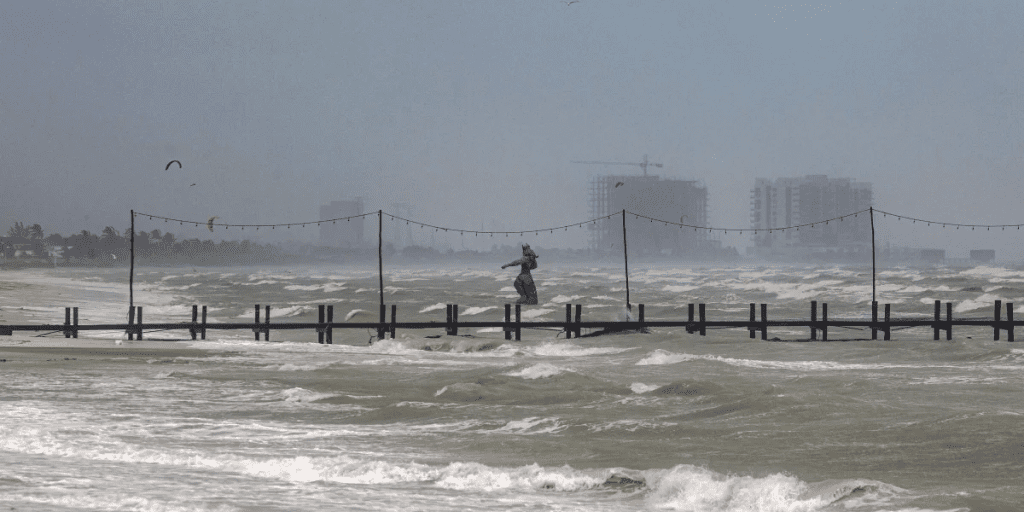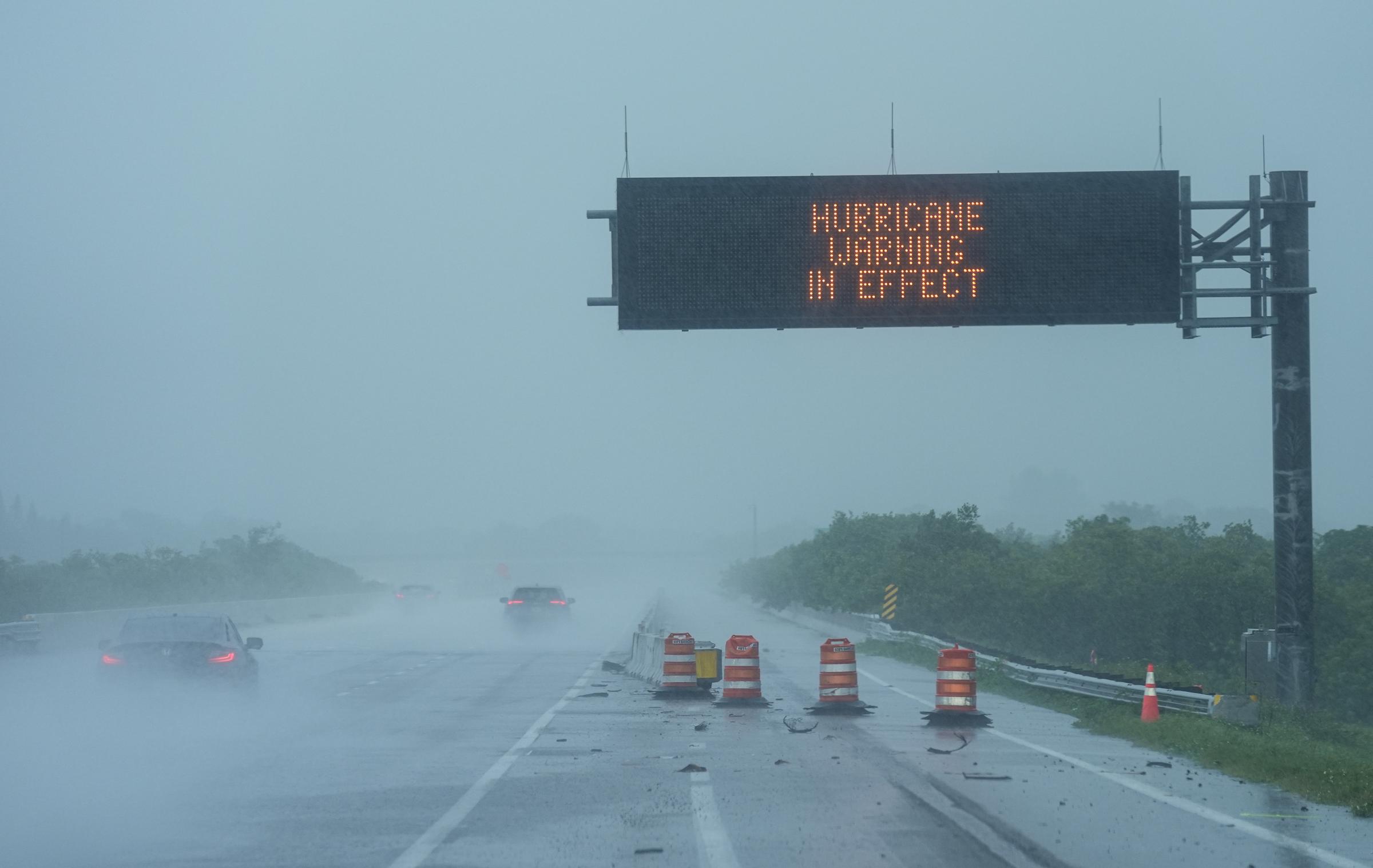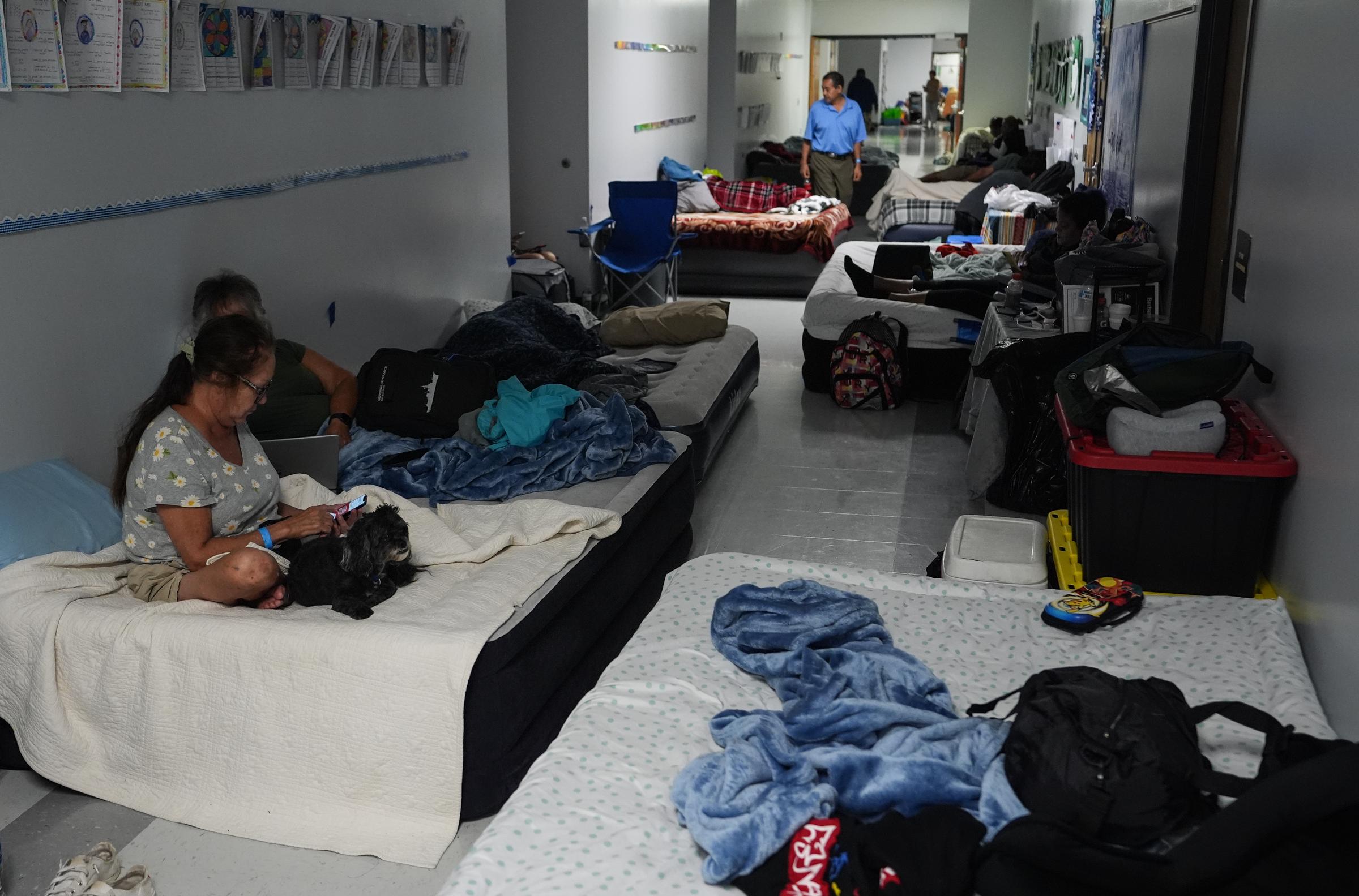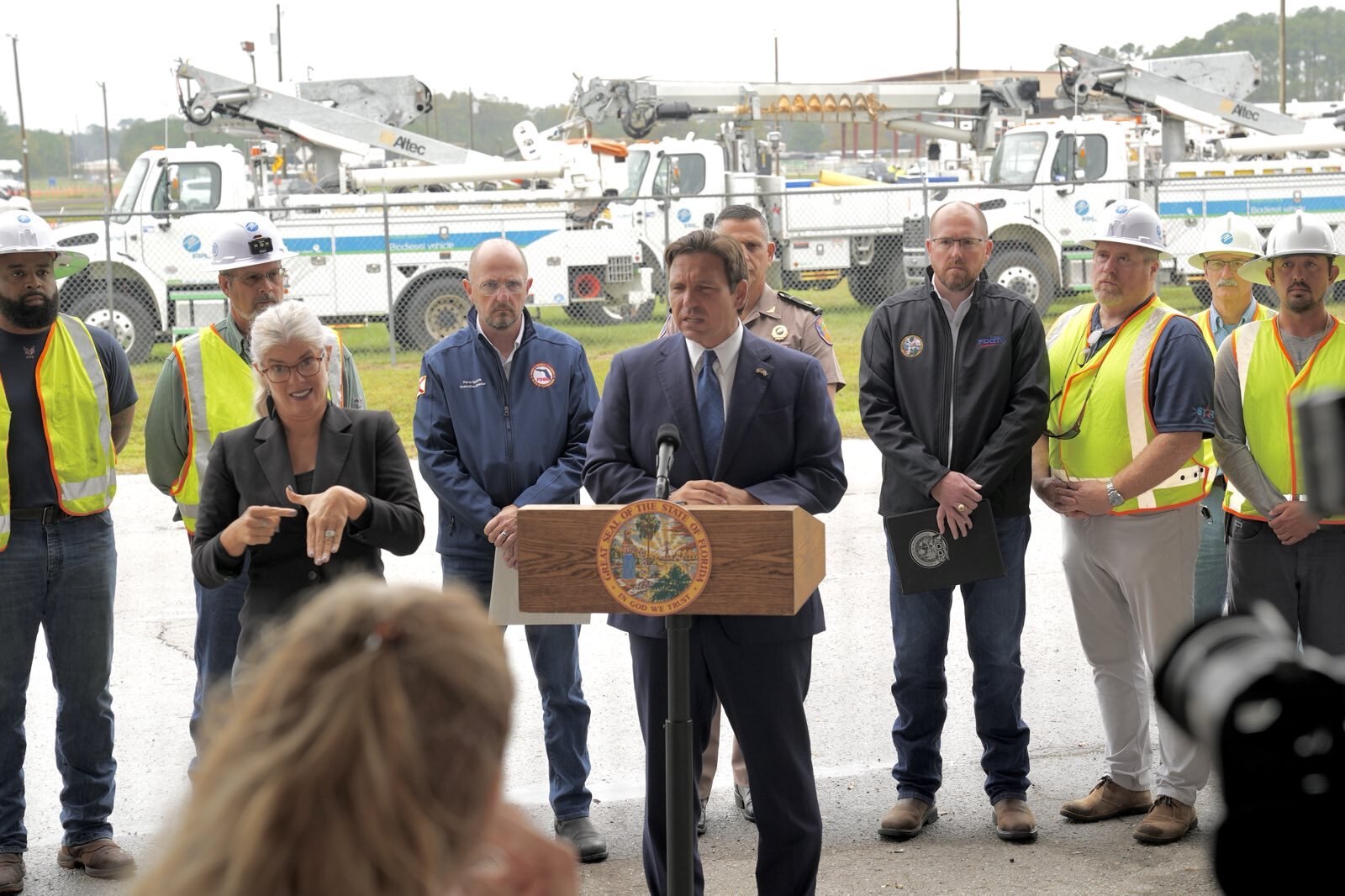On October 9, 2024, as darkness enveloped Florida’s Gulf Coast, Hurricane Milton made its brutal entrance near Siesta Key in Sarasota County. With its landfall came unrelenting winds, deadly tornadoes, and torrential rain that left a wake of destruction. This powerful Category 3 storm has forever changed communities, shattered homes, and displaced thousands of residents. As Florida faces the daunting task of recovery, let’s take an in-depth look at Hurricane Milton’s impact, the response efforts, and what’s next for the Sunshine State.
The Arrival of Hurricane Milton: Florida’s Gulf Coast Under Siege

As Hurricane Milton barreled toward Florida, it quickly became clear that the storm was a force to be reckoned with. The hurricane struck near Siesta Key around 8:30 PM, bringing sustained winds over 120 miles per hour (mph) and drenching rain that transformed roads into rivers and fields into lakes. Its fury was felt across Sarasota, Manatee, and Hardee counties, where over 1.1 million homes and businesses lost power in the storm’s initial hours.
Winds and Rainfall: A Potent Combination
Milton’s winds exceeded 120 mph upon landfall, snapping trees like twigs and tearing roofs from homes. Coupled with unyielding rain, the storm quickly saturated the land, creating dangerous conditions for residents who hadn’t yet evacuated. In some areas, rainfall totals approached 20 inches, overwhelming local drainage systems and causing flash floods. Sarasota bore the brunt, with entire neighborhoods submerged, leaving residents stranded and awaiting rescue.
Destruction Unleashed: Tornadoes and Flash Floods Wreak Havoc
In addition to wind and rain, Hurricane Milton spawned multiple tornadoes that tore through several counties, inflicting widespread destruction. One of the hardest-hit areas was St. Lucie County, where a series of powerful tornadoes ripped through the Spanish Lakes Country Club, a senior community near Fort Pierce.
Tornadoes Strike St. Lucie County
Sheriff Keith Pearson described the scenes of devastation left by the tornadoes as “catastrophic.” He confirmed multiple fatalities within the Spanish Lakes community, with search and rescue teams working tirelessly to locate survivors. “They are listening for life,” he shared, illustrating the painstaking process of sifting through rubble to find those who may still be trapped.
The storm’s toll in St. Lucie County includes dozens of destroyed homes, many of which were in mobile home communities. According to County Spokesman Erick Gill, “We have dozens of homes in St. Lucie County that have been damaged. Some catastrophic damage.” The death toll is expected to rise as recovery efforts continue.
Flash Flooding and Record-Breaking Rainfall in St. Petersburg
As Milton pressed onward, its heaviest rain band stalled over St. Petersburg, resulting in what meteorologists called a 1-in-1,000-year rainfall event. Over nine inches of rain fell within three hours, shattering previous records and submerging the city’s streets. This volume of rain in such a short period is equivalent to three months’ worth of rainfall, which the city simply couldn’t handle.
As the rain continued, the National Weather Service issued flash flood warnings across west-central Florida. Roads became impassable, and emergency responders struggled to keep up with the mounting calls for assistance. The flooding forced many residents to take refuge on higher ground, hoping the waters would recede quickly.
Statewide Impact and Emergency Response: Florida Mobilizes for Disaster Relief
With Hurricane Milton triggering tornado warnings across the state—116 in total, according to Governor Ron DeSantis—Florida’s emergency response teams have mobilized to assist affected communities. The scale of destruction prompted an extensive response, with task forces deployed to search for missing persons and provide aid to those trapped by floodwaters.
Search and Rescue Efforts in Full Force

In the days following the storm, emergency responders have worked around the clock to locate survivors and assess the damage. Florida’s Division of Emergency Management (FDEM) dispatched rescue teams to heavily impacted areas, prioritizing senior communities and mobile home parks, which were especially vulnerable. FDEM Director Kevin Guthrie reported that over 125 homes statewide were completely destroyed, with hundreds more severely damaged.
“Our No. 1 goal is life safety,” Sheriff Pearson emphasized, as rescuers continued to navigate debris-filled landscapes in search of trapped residents. Teams are utilizing specialized equipment, including drones and thermal imaging, to locate individuals in remote or hard-to-reach areas.
Governor DeSantis Declares a State of Emergency
In response to the devastation, Governor Ron DeSantis declared a state of emergency, unlocking federal funds and resources to aid in the recovery. “The impact of Hurricane Milton will be felt across Florida for a long time,” he stated, encouraging Floridians to stay vigilant and follow official guidance. He added that state and federal agencies would provide relief for those affected, as well as aid in the rebuilding process.
The governor also acknowledged the quick response from the National Guard, which has been instrumental in distributing food, water, and medical supplies to isolated areas. Additionally, temporary shelters have been established to accommodate displaced residents, with efforts underway to restore power and reopen critical infrastructure.
Tracking Hurricane Milton’s Path Inland: Threats Continue
As Hurricane Milton moves inland, it has been downgraded to a Category 1 storm. However, even with reduced wind speeds, the storm still poses significant threats to central Florida, where heavy rains and strong winds continue to batter communities. The National Hurricane Center has warned residents to brace for additional flooding and potential tornadoes as the storm progresses.
Storm Surge and Coastal Erosion
Though Milton’s winds have weakened, the risk of storm surge remains high along Florida’s western coast. Surge levels reached as high as 12 feet in some areas, devastating coastal properties and eroding beaches. The combined impact of wind-driven waves and rising sea levels threatens to reshape portions of Florida’s shoreline permanently.

Communities along the coast, including Clearwater and Sarasota, are experiencing severe beach erosion, which will likely require extensive restoration efforts. These areas, popular with tourists and residents alike, now face a long road to recovery, with local officials warning that rebuilding will take months—if not years.
Climate Change and the Growing Intensity of Hurricanes
Hurricane Milton’s intensity has raised questions about the role of climate change in driving more powerful and destructive storms. Warmer ocean temperatures contribute to the rapid intensification of hurricanes, as was seen with Milton, which strengthened from a tropical storm to a Category 3 hurricane within a short period. This trend is expected to continue, placing vulnerable coastal communities at greater risk.
As hurricanes grow stronger and more frequent, Florida faces an urgent need to reassess its infrastructure and preparedness strategies. Investment in resilient building practices, enhanced evacuation routes, and sustainable coastal management will be essential in adapting to these changing climate conditions. Milton serves as a stark reminder of the risks posed by an evolving climate, underscoring the importance of proactive planning and environmental stewardship.
Resilience and Recovery: What Lies Ahead for Florida

In the wake of Hurricane Milton, Florida now faces the formidable task of recovery. Rebuilding damaged communities will require a coordinated effort, with support from federal agencies, local governments, and volunteer organizations. The journey ahead will not be easy, but Floridians have proven resilient in the face of previous hurricanes, and many are already rallying to help their neighbors.
The Role of Community Support in Recovery
In communities like St. Lucie County, neighbors are coming together to clear debris, distribute supplies, and support those who have lost everything. Volunteer organizations, including the Red Cross and local relief agencies, have mobilized to provide food, water, and shelter to displaced residents. This outpouring of community support has been a lifeline for many, reflecting the spirit of solidarity that often emerges in the wake of natural disasters.
Federal and State Aid for Rebuilding
Governor DeSantis has assured residents that federal funds will be available to help rebuild homes, businesses, and infrastructure. Grants and low-interest loans are being made available to individuals and business owners who have suffered losses. Additionally, local governments are exploring ways to improve flood defenses and enhance building codes to better withstand future storms.
FEMA has begun conducting damage assessments across the affected regions, with plans to expedite aid for those most in need. The agency is also coordinating with state and local partners to develop a long-term recovery plan that addresses both immediate needs and the broader challenges posed by climate resilience.
Conclusion
Hurricane Milton’s impact on Florida has been profound, highlighting the state’s vulnerability to powerful storms and the urgent need for comprehensive disaster preparedness. As communities begin the difficult process of recovery, the focus will shift to rebuilding with resilience in mind. From the courageous efforts of first responders to the unwavering spirit of Florida’s residents, the response to Hurricane Milton reflects the strength and determination of those committed to rebuilding and protecting their homes.
The road to recovery may be long, but Florida’s resolve remains unshaken. As the state rebuilds, the lessons learned from Hurricane Milton will serve as a guide, ensuring that future generations are better prepared to face the challenges of an increasingly unpredictable climate.


